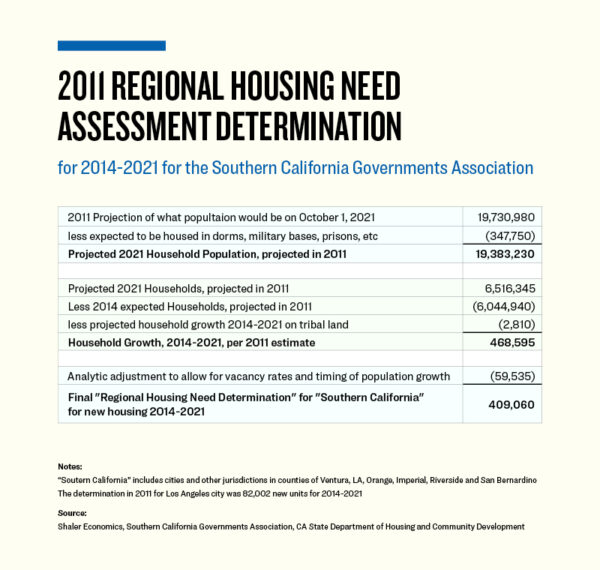
Commentary
Southern California counties, cities and jurisdictions need to provision for 1.5 million new homes throughout the next eight years.
California’s Department of Housing and Community Development (HCD) works with local jurisdictions, analyzing population growth, job growth and transportation infrastructure to develop mandates for how many new homes jurisdictions must plan for.
The approach includes city planning as well as working with local transportation, safety and utility authorities to ensure home builders and housing developers have what they need to build 1.5 million new homes in the next eight and-a-half years.
Cities, of course, cannot force economic expansion, nor force property developers to build. Housing will only get built if the economic opportunity for the property developer exists to build. However, town planning, utility hookups, fire and safety and transportation networks all also have to exist and those are all the work of counties, cities and other local jurisdictions to accomplish.
Using economic, transportation and population projections from 2019 which relied on then just-released data from 2016, the HCD approved the Regional Housing Need Allocation Plan of the Southern California Association of Governments (SCAG) on March 22. Members of SCAG include governments within the counties of Ventura, Los Angeles, Orange, Riverside, San Bernardino and Imperial.
Governments in San Diego County belong to a different coalition of governments. Their housing plan was approved by the HCD in 2019.
The state wants the counties, cities and towns within the SCAG coalition to plan and help build about 1.3 million new homes before October 2029. The state wants the local jurisdictions within San Diego County to plan and help get built another 171,685 new homes during that same time period. Combined for all of Southern California (SCAG jurisdictions and San Diego), Southern California governments are expected to approve about 1.5 million new homes.
The fifth cycle of state-wide planning ends this year, and lasted from 2014 to 2021. The sixth cycle of determining and implementing the Regional Housing Need Allocation Plan will go from this year to October 2029. The state-mandated planning process goes back to 1969, when Ronald Reagan was governor of California.
Slow Growth
Under the analyses done for the plan about to expire, data from 2011 was used to determine how much housing had to be built from 2014 to 2021 across the member jurisdictions of the SCAG governments (southern California excluding San Diego county). Under that analysis, it was projected that Southern California would have about 6.5 million households, in 2021.
However, now that 2021 is actually here, the state’s current planning process expects that there are only 6.25 million households in Southern California (again excluding San Diego County).
Somehow, even though household formation was 250,000 households less than expected, there is still a severe housing shortage in the region.
Indeed, it is so severe that according to a recent analysis by the controller for the City of Los Angeles, three homeless people per day are dying just in Los Angeles.
The California housing crisis is literally a matter of life and death.
Housing Surge Expected
Over the next planning period, from 2021 to 2029, the number of households in Ventura, LA, Orange, San Bernardino, Riverside and Imperial counties is expected to grow from 6.25 million households to 6.8 million households, or about 550,000 new households.
So, 550,000 of the 1.34 million new housing units the state wants that region’s governments to facilitate building are for new household formation.
However, the other approximately 800,000 units are to increase supply for housing and reduce the overall cost of housing in California. That part of the plan is shown in the nearby table as “adjustments for vacancies and to reduce overcrowding and reduce housing costs.”
Within that number, the City of Los Angeles alone is expected to facilitate the building of about 450,000 new housing units.
The jurisdictions within San Diego County are supposed to facilitate the construction of about another 172,000 new housing units.
No Easy Task
Of course, none of this will be easy.
Five years ago, some three-quarters of Los Angeles voters approved bond measure HHH, which provided $1.2 billion in subsidized financing and other subsidies for the construction of new housing intended for people struggling with homelessness.
Since that time, up through the most recent report done by the city’s controller Ron Galperin, less than 200 units had actually been constructed.
High costs of land in some areas, stifling bureaucracy and other issues can dramatically slow a property developer’s ability to build new homes.
Even so, the governments of Southern California and San Diego County have a directive. Now they have to implement it.
Tim Shaler is a professional investor and economist based in Southern California. He is a regular columnist for The Epoch Times, where he exclusively provides some of his original economic analysis.








Be the first to comment